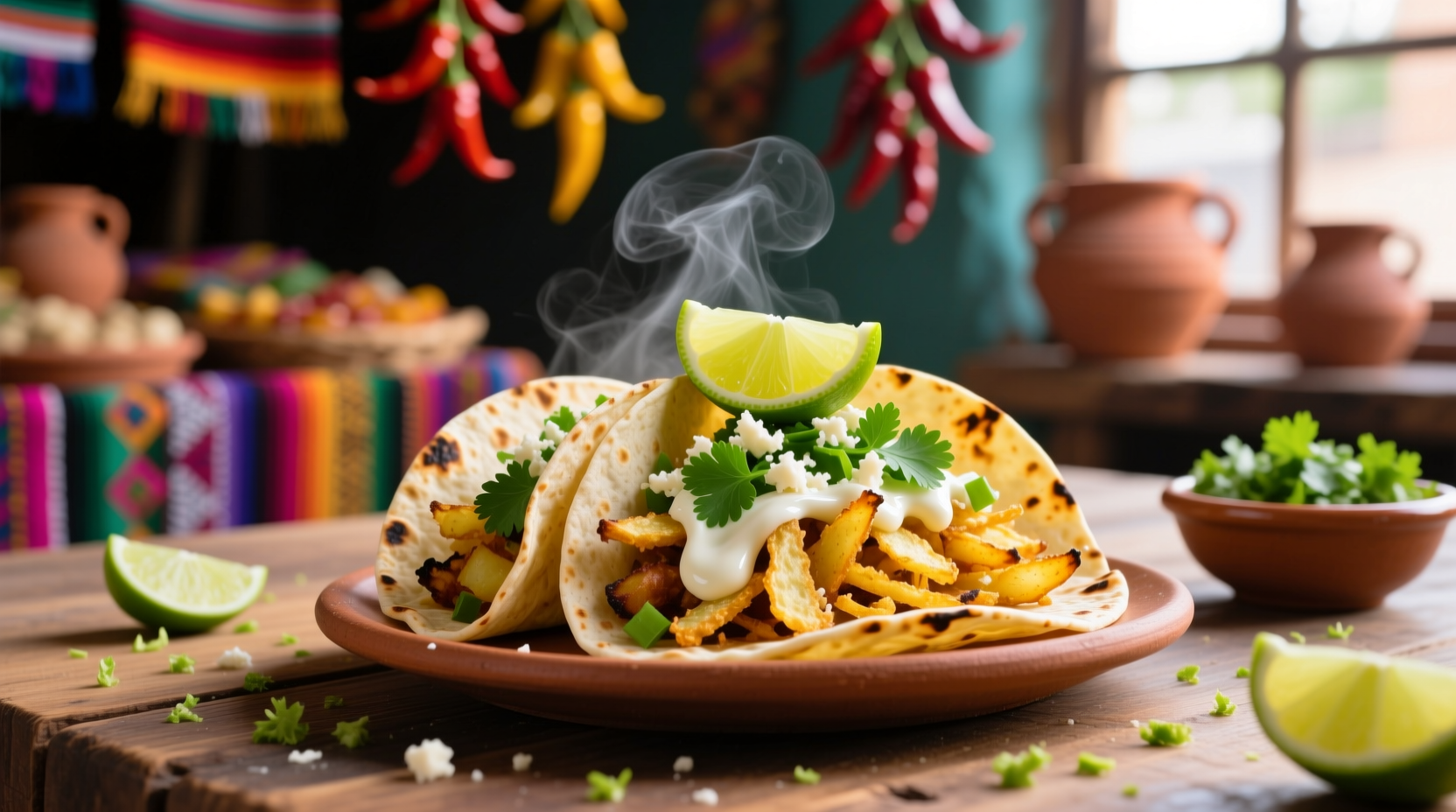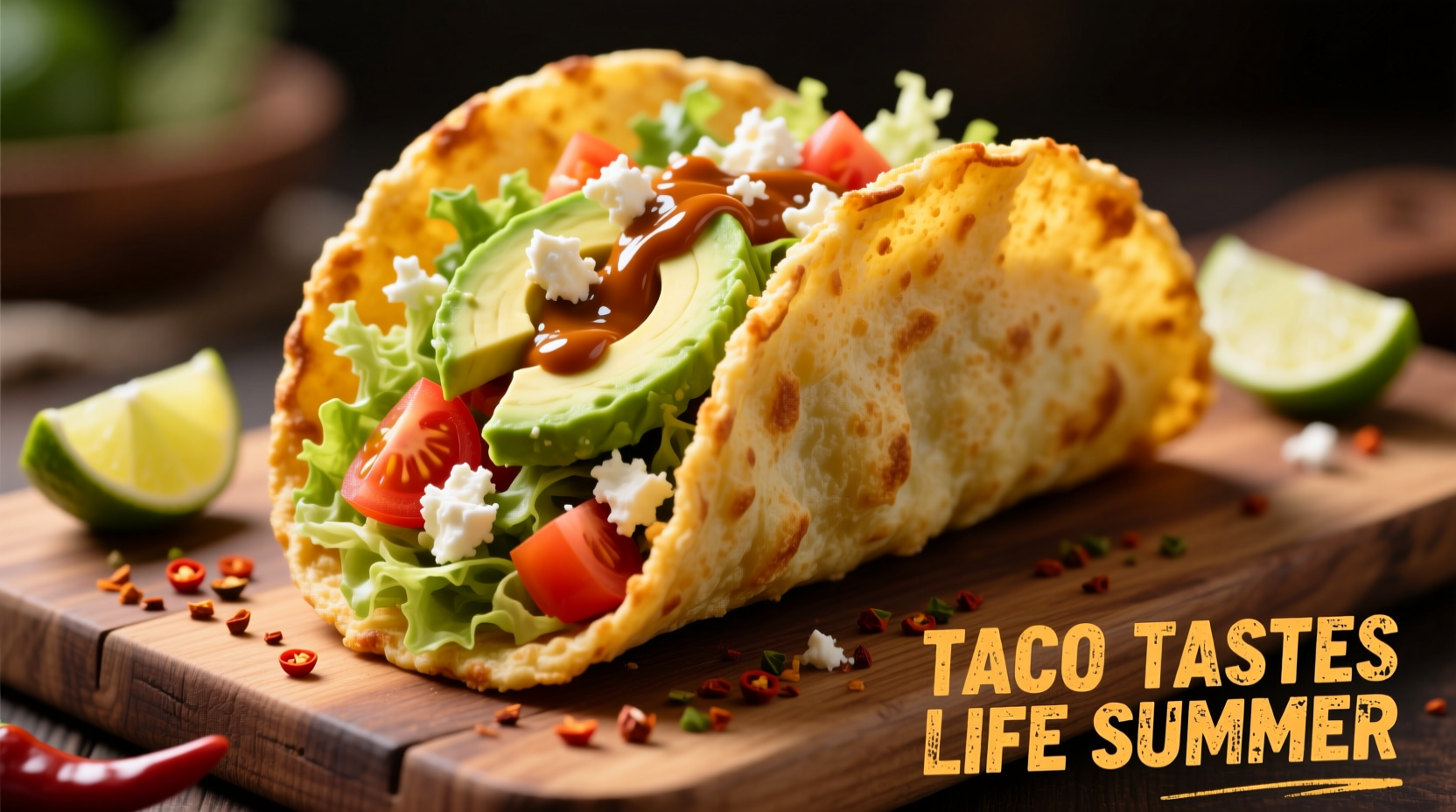What Makes Potato Tacos Special in Latin American Cuisine
While many associate tacos exclusively with meat fillings, potato tacos represent an authentic tradition rooted in resourcefulness and cultural fusion. These humble yet flavorful creations emerged when indigenous communities incorporated Spanish-introduced ingredients like potatoes into their traditional corn-based cuisine. Today, they're a staple across Mexico and Central America, particularly in regions where meat was historically scarce or expensive.
From Andes to Aztecs: The Potato's Journey to Taco Fillings
Potatoes originated in the Andes mountains over 8,000 years ago, but didn't reach Mesoamerica until Spanish colonization. This introduction created an unexpected culinary revolution. By the , Mexican cooks had developed techniques to transform this foreign tuber into something uniquely their own. The potato's ability to thrive in diverse climates made it perfect for rural communities, eventually becoming a cornerstone of affordable, vegetarian-friendly street food.
| Region | Traditional Potato Preparation | Distinctive Spices |
|---|---|---|
| Mexico City | Boiled then pan-fried | Epazote, black pepper |
| Oaxaca | Steamed with banana leaves | Hoja santa, avocado leaves |
| Guatemala | Mashed with cheese | Recado rojo, achiote |
Choosing the Perfect Potatoes for Authentic Flavor
Not all potatoes work equally well in tacos. Russet potatoes provide excellent fluffiness but can become too soft, while Yukon Golds offer the ideal balance of creaminess and structure. For traditional preparation, Mexican cooks prefer papas criollas (Andean potatoes) when available, which have a naturally buttery flavor and hold their shape beautifully. When selecting potatoes, look for firm specimens without green spots or sprouts—these indicate exposure to light that creates potentially harmful compounds.

Step-by-Step Guide to Making Perfect Potato Tacos at Home
Creating authentic potato tacos requires attention to texture and seasoning. Start by boiling peeled potatoes until just tender—overcooking leads to mushy fillings. While potatoes cook, prepare your spice blend: traditional Mexican potato tacos use minimal seasoning to let the potato flavor shine, typically just salt, freshly ground black pepper, and a touch of epazote (an herb with distinctive earthy notes).
Mastering the Filling Texture
The secret to exceptional potato tacos lies in the final texture. After boiling, gently pan-fry the potatoes in a hot skillet with minimal oil. This creates a delightful contrast between the crispy exterior and creamy interior. For authentic street-food style, Mexican cooks use a technique called machucado—lightly mashing the potatoes while retaining some texture. Avoid using pre-made mashed potatoes, which contain dairy that alters the traditional flavor profile.
Warming Tortillas Properly
Never skip the tortilla-warming step. Authentic corn tortillas should be heated directly over a gas flame or on a dry comal until they develop slight char spots and become pliable. This releases their natural corn aroma and prevents tearing when filled. Keep warmed tortillas wrapped in a clean kitchen towel to maintain warmth and moisture until serving.
Regional Variations You Should Try
While basic potato tacos appear across Latin America, regional variations showcase local ingredients and traditions. In central Mexico, you'll find tacos de papa con rajas featuring strips of roasted poblano peppers. Coastal regions often add a squeeze of lime and fresh cilantro, while highland areas might include queso fresco. For a vegetarian protein boost, some regions mix in refried beans before filling the tortillas—a combination known as tacos de papa con frijoles.
Avoiding Common Potato Taco Mistakes
Many home cooks make critical errors that compromise authentic flavor. Adding potatoes to cold oil creates greasy fillings—always heat your skillet first. Using pre-shredded cheese introduces anti-caking agents that prevent proper melting. And never serve potato tacos with wet toppings like salsa verde until the moment of eating, as this makes tortillas soggy. For best results, serve components separately and let diners assemble their own tacos.
Nutritional Benefits of Potato Tacos Done Right
When prepared traditionally, potato tacos offer surprising nutritional advantages. A single serving (two 6-inch corn tortillas with potato filling) contains approximately 300-350 calories, with complex carbohydrates from both potatoes and corn providing sustained energy. Potatoes contribute significant potassium and vitamin C, while corn tortillas offer naturally gluten-free carbohydrates. For maximum nutritional value, skip heavy creams and cheeses, and top with fresh vegetables like diced tomatoes and onions.
Perfect Pairings for Your Potato Taco Experience
Traditional accompaniments enhance rather than overwhelm potato tacos' subtle flavors. A simple crema (Mexican-style sour cream) provides cooling contrast to any spicy elements, while fresh pico de gallo adds brightness without moisture. For beverages, try traditional horchata (rice water) or a light Mexican lager. When serving multiple taco varieties, present potato tacos first as they have the most delicate flavor profile.











 浙公网安备
33010002000092号
浙公网安备
33010002000092号 浙B2-20120091-4
浙B2-20120091-4